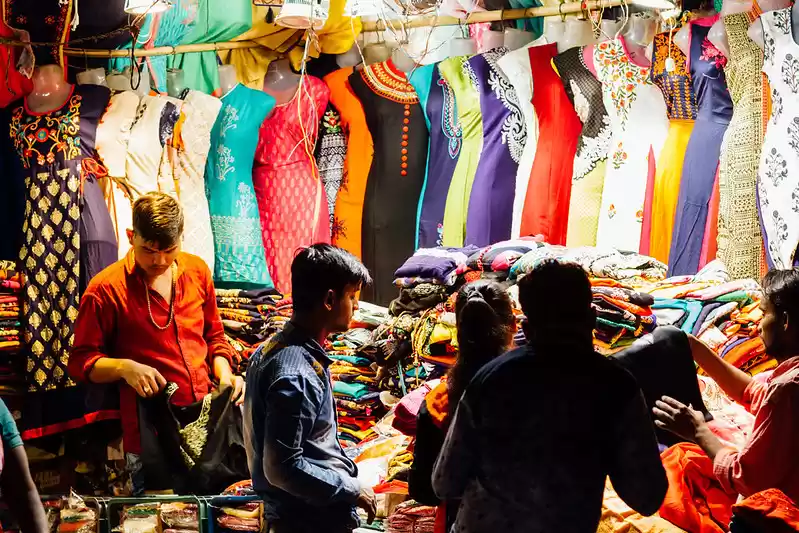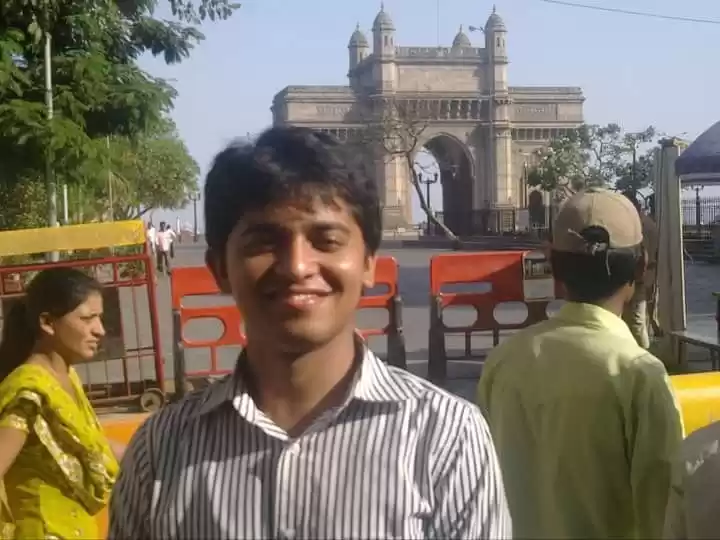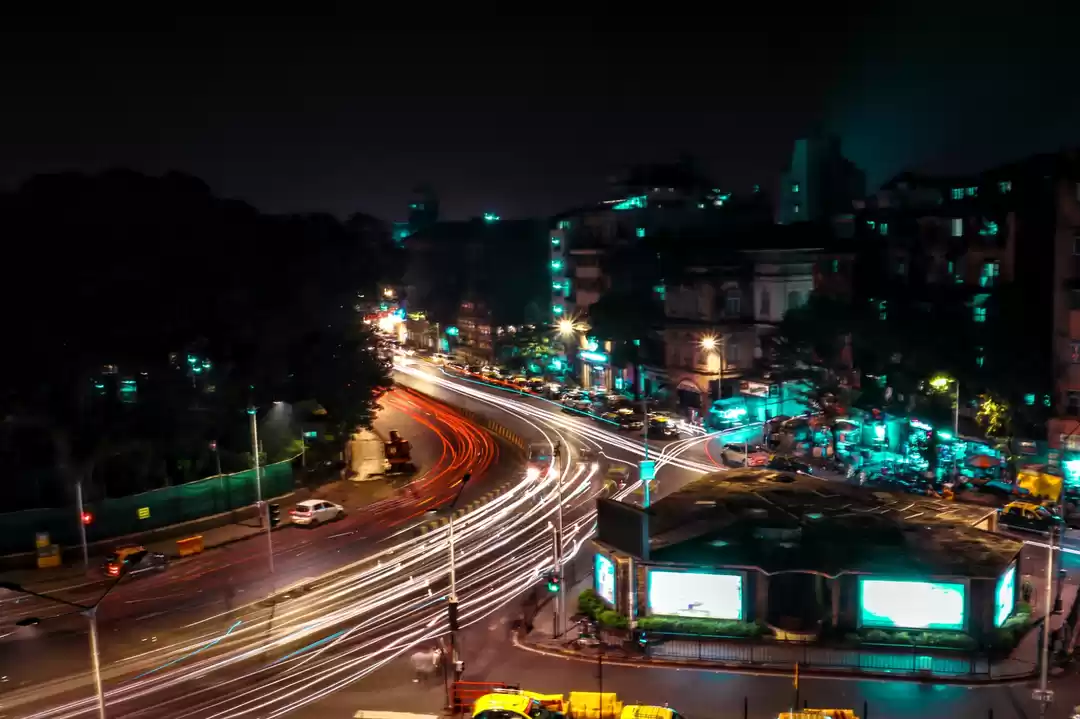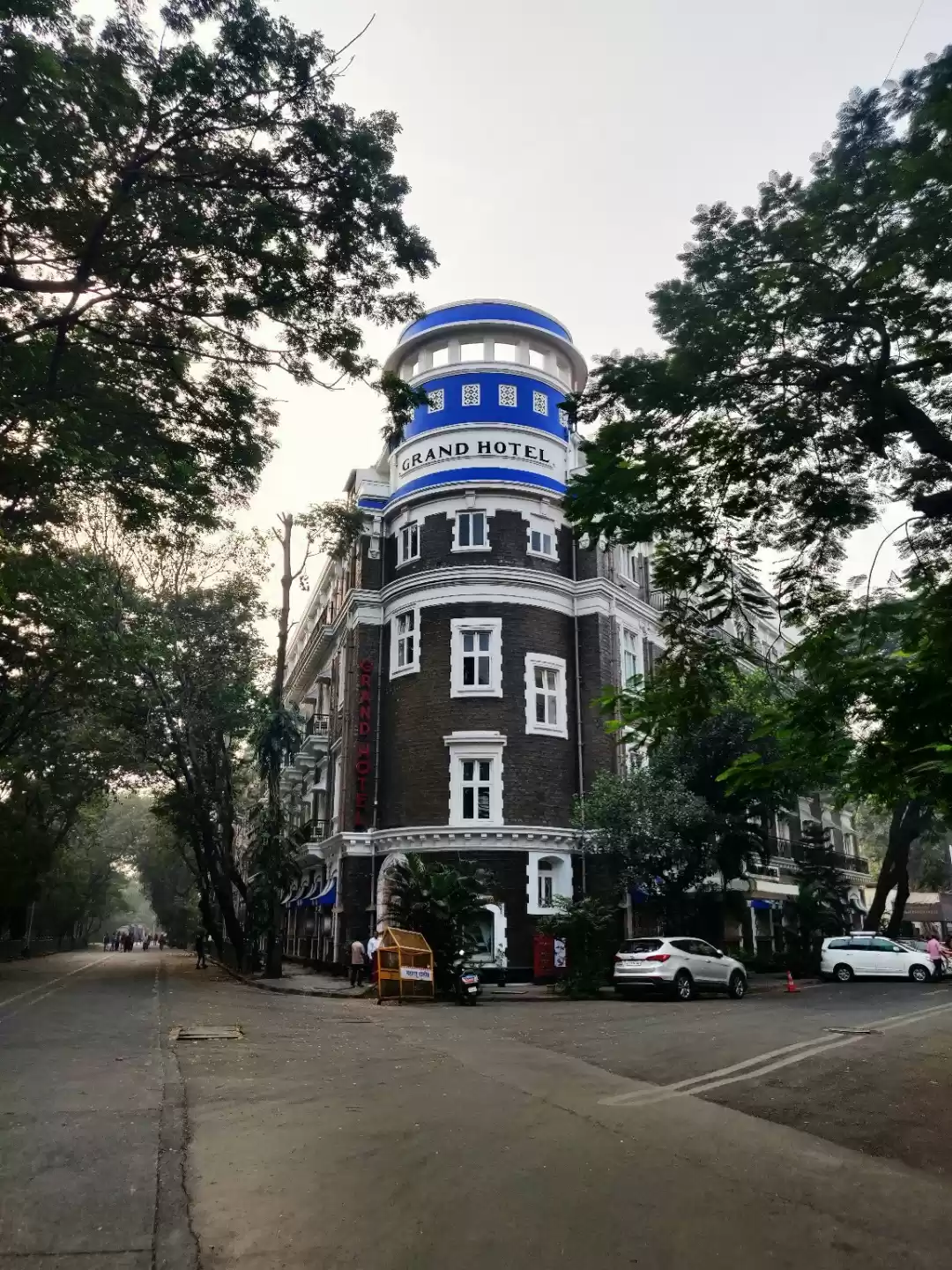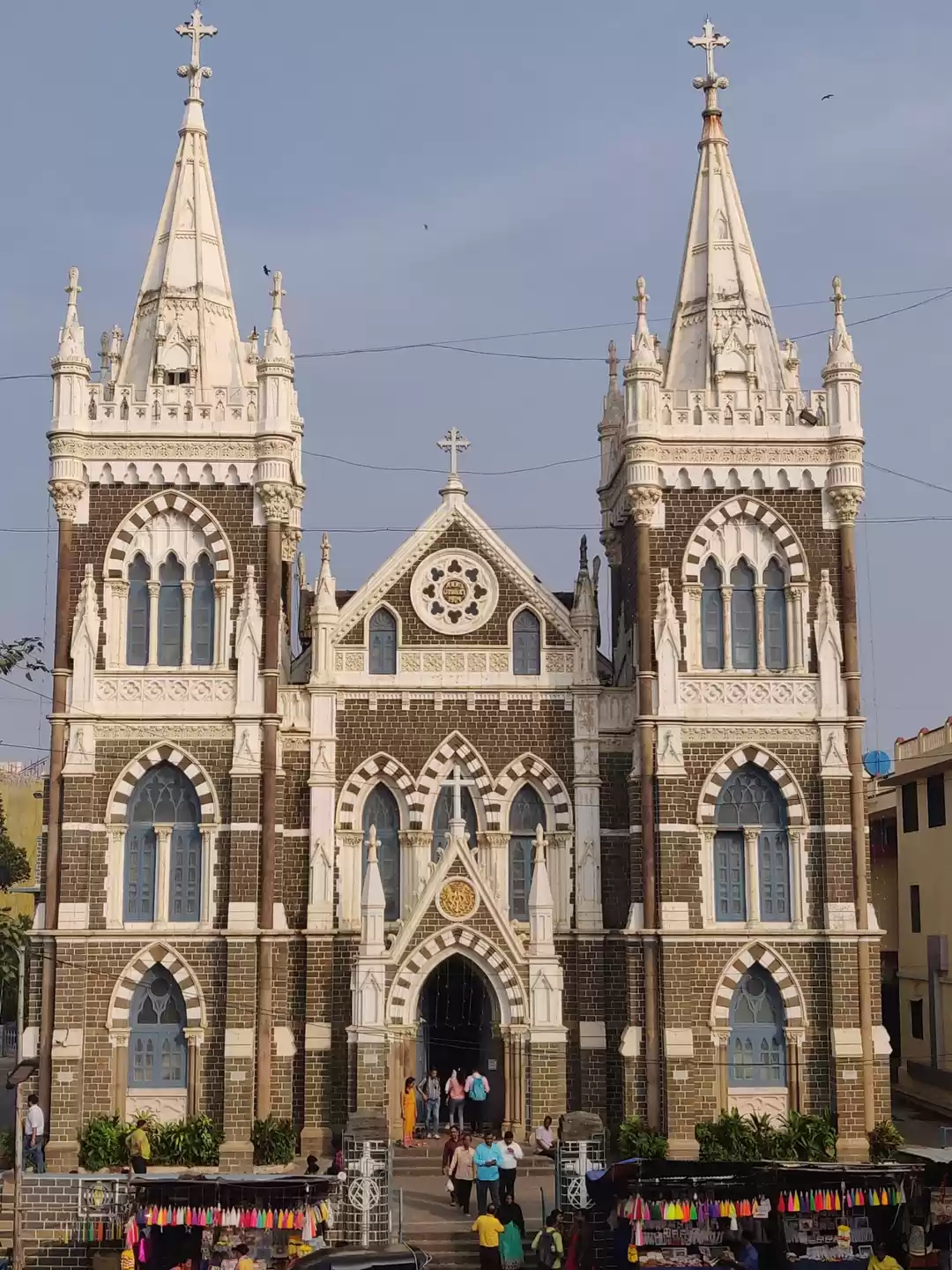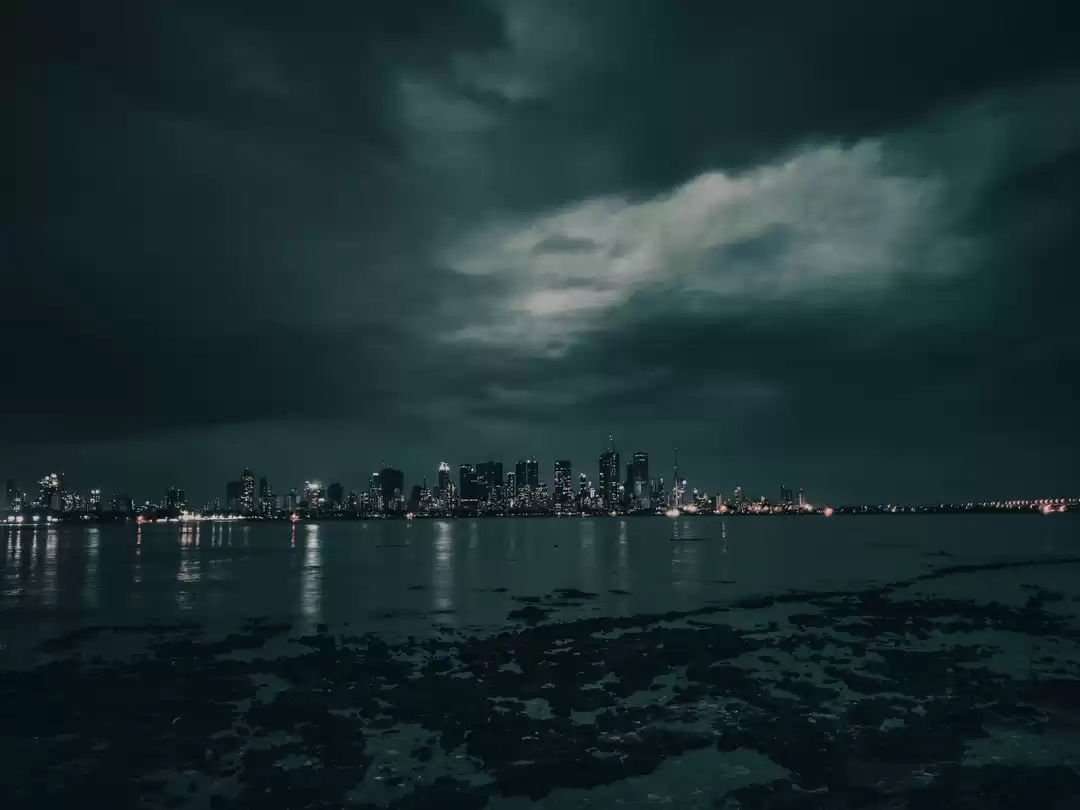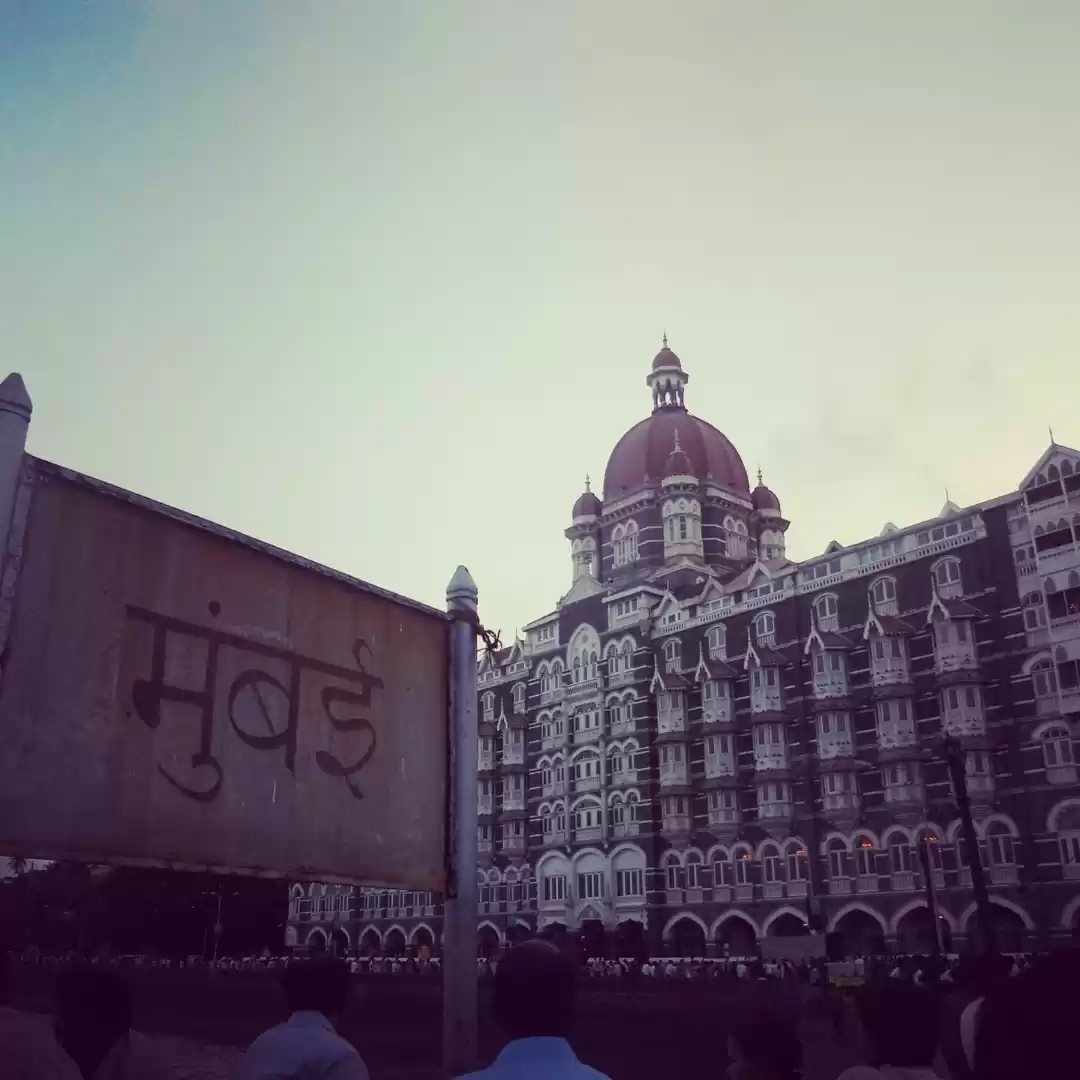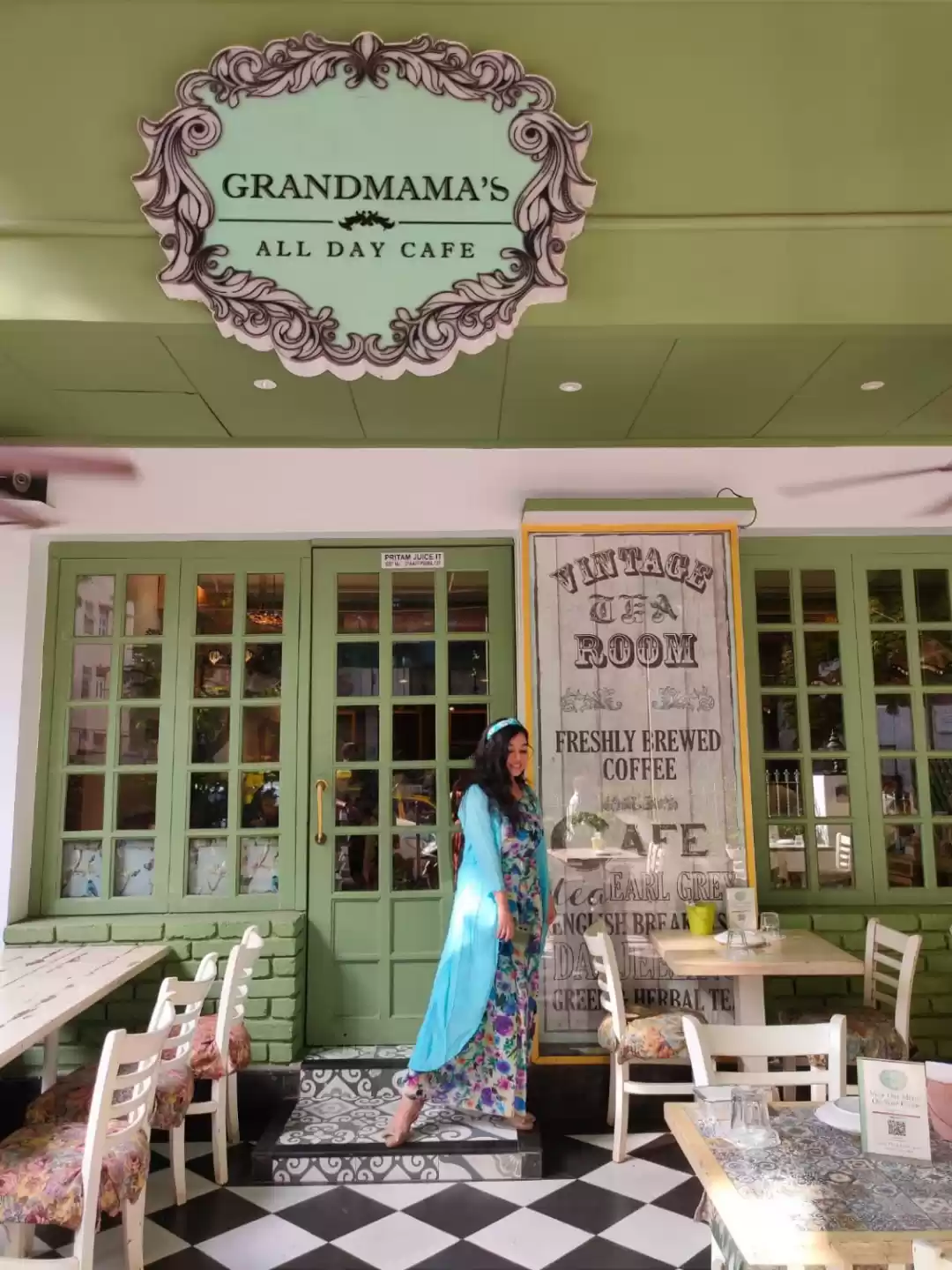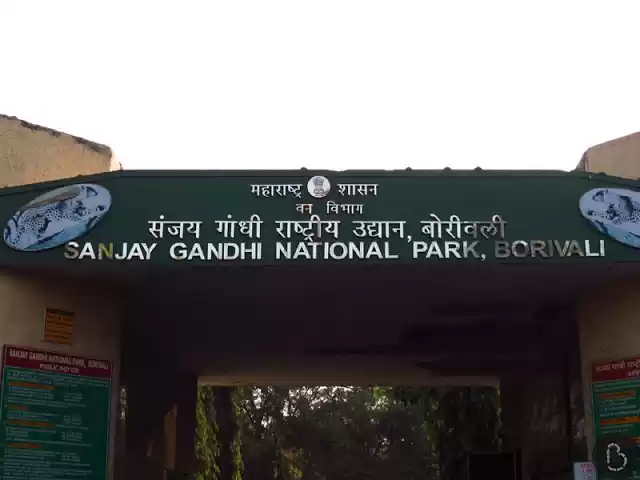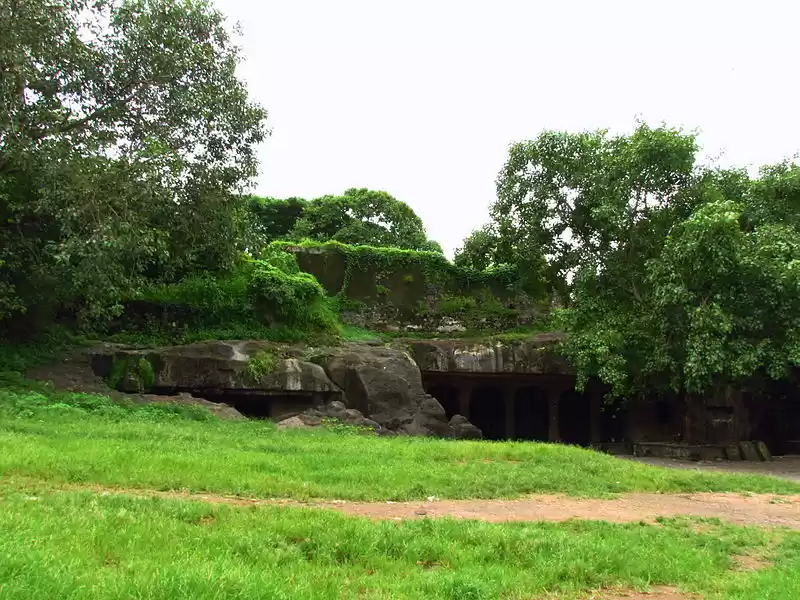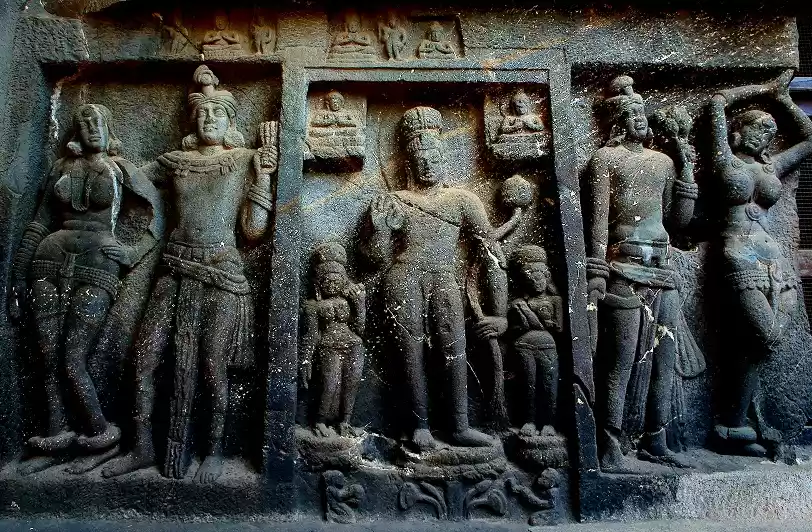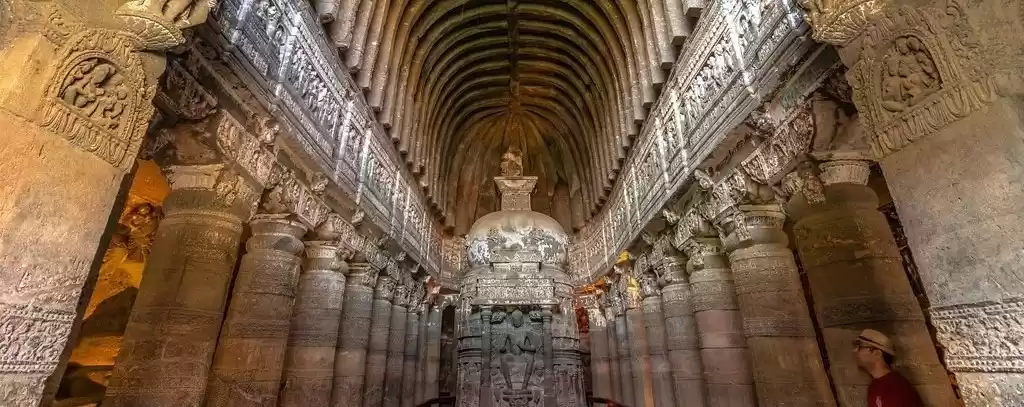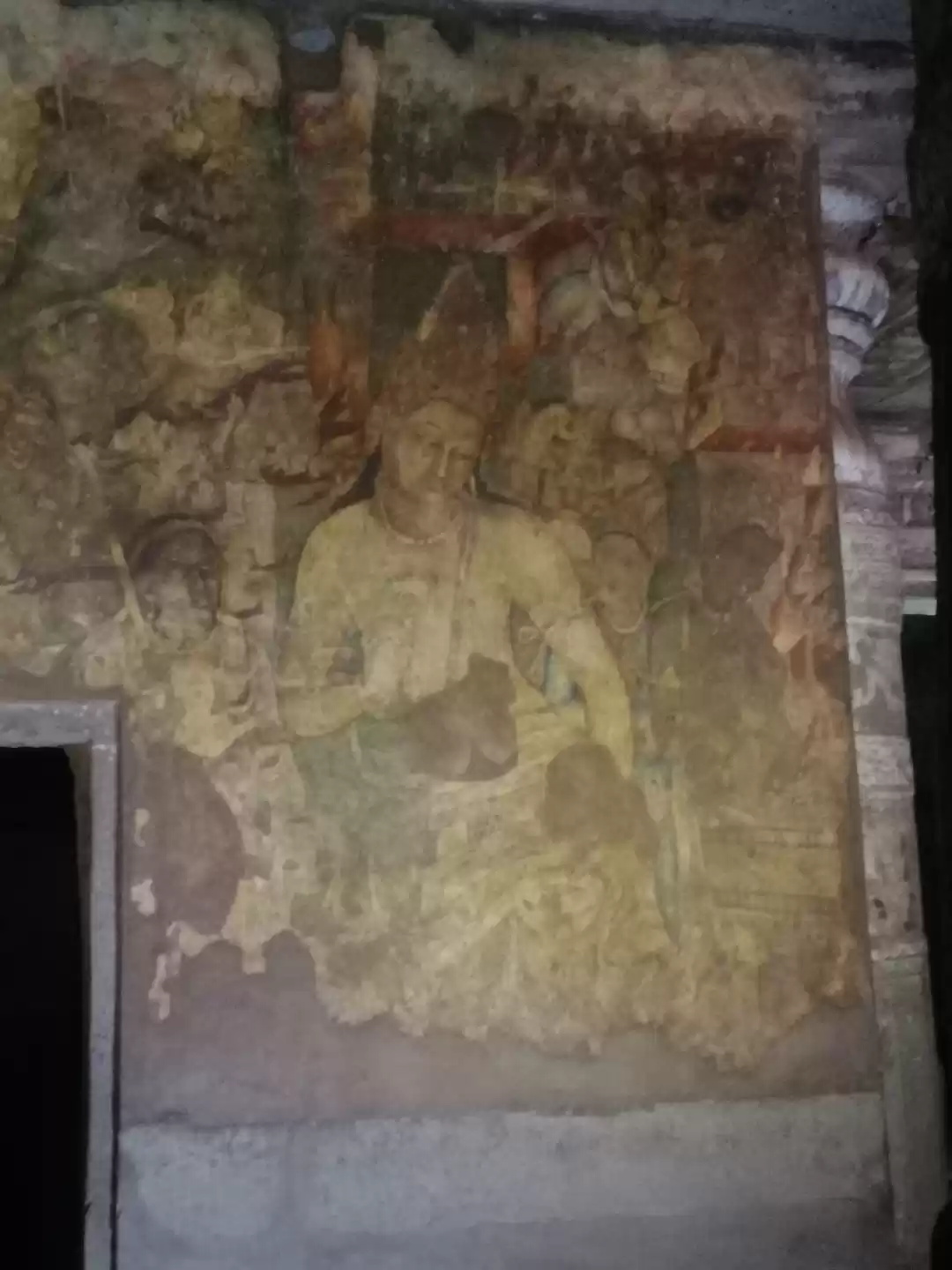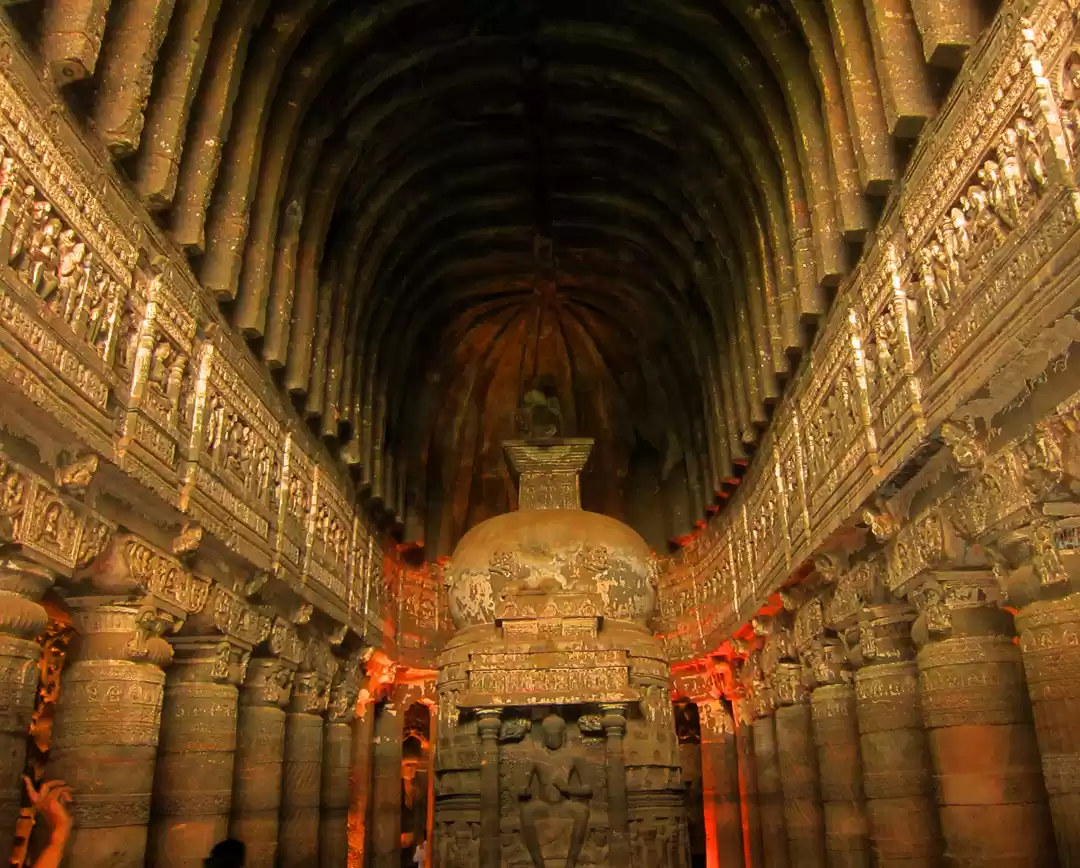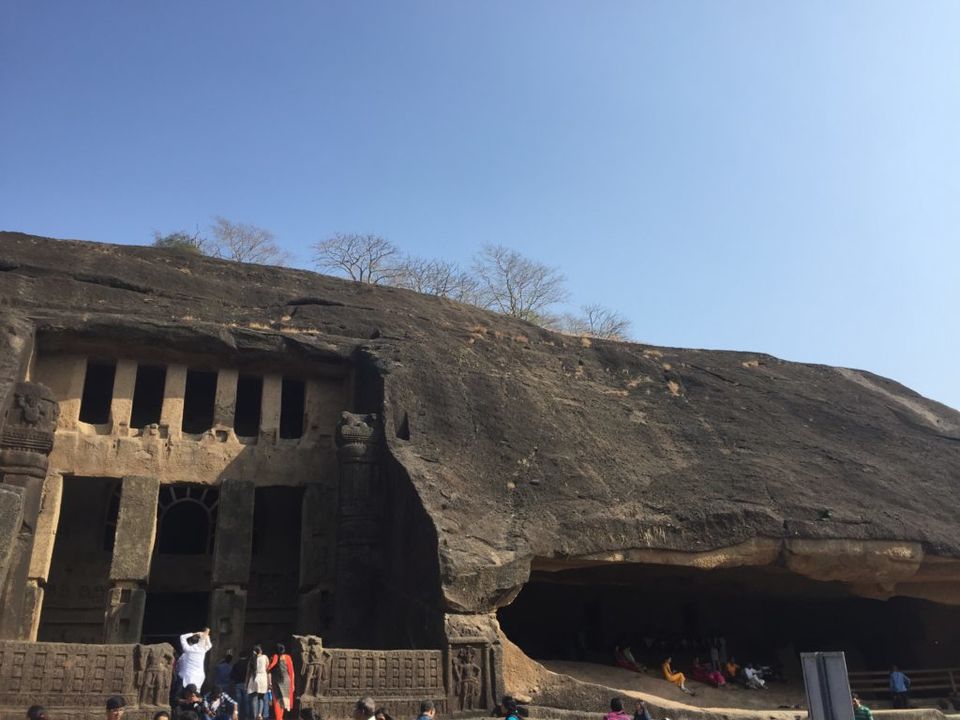
In the heart of Mumbai city, these millennium-old Buddhist caves take you back to the era when the Buddhist religion was at its peak in this region. Largest Buddhist site in India with more than 100 caves excavations on one hill.
These caves were built between the 1st and 11th centuries and consist of 1 09 rock-cut caves which include Viharas (monasteries), Chaitya (Meditation halls), cisterns and one of the earliest statues of Buddhist iconography.
Why this location was ideal for Kahneri caves
The Ancient trade route between important ports like Sopara and Kalyan passed through Kahneri ( Krishnagiri - Black mountain ). Businessmen would use it for staying during their long travels. Various inscriptions at Kahneri mention that various businessmen contributed to building these caves.
Why should you visit Kahneri Caves
109 rock-cut caves of different types Cave 1
This is the first cave you encounter, It is a Vihara and only two-storied cave in Kahneri. The interior part of the cave is unfinished probably due to a structural defect in the architecture.
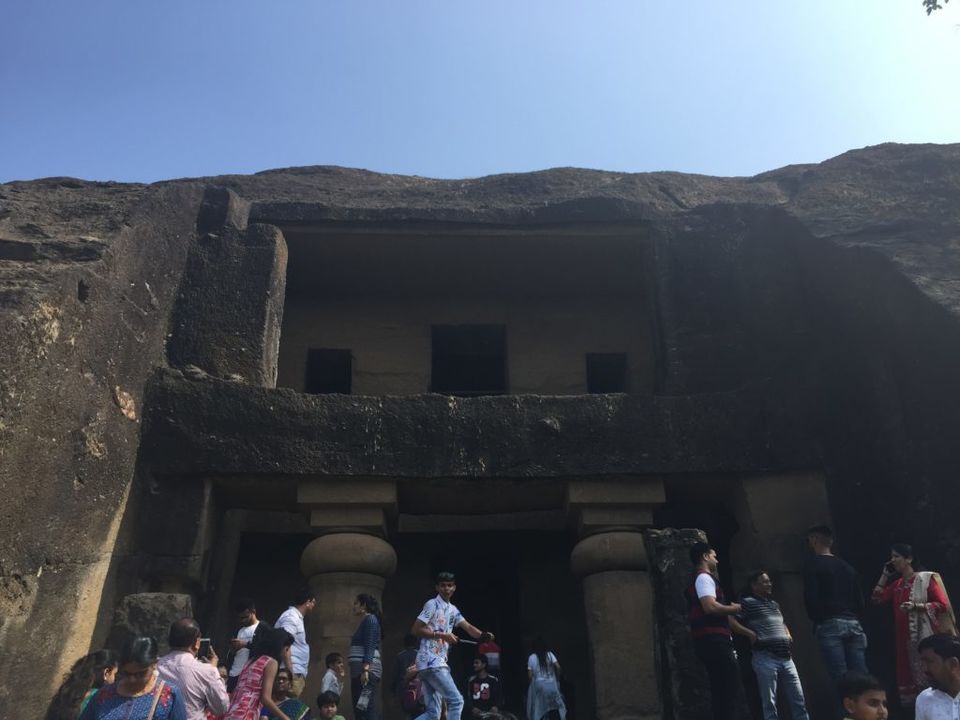
Cave 2
This cave is simple and has a long verandah to provide relief in Monsoons.
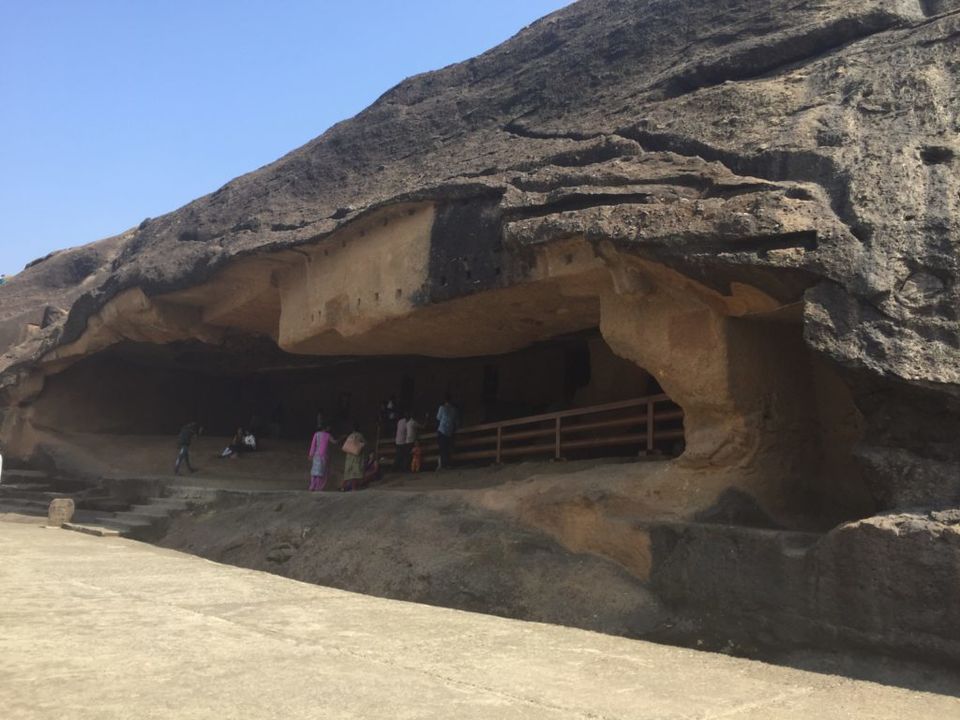
Cave 2 has Stupas in a separate section.
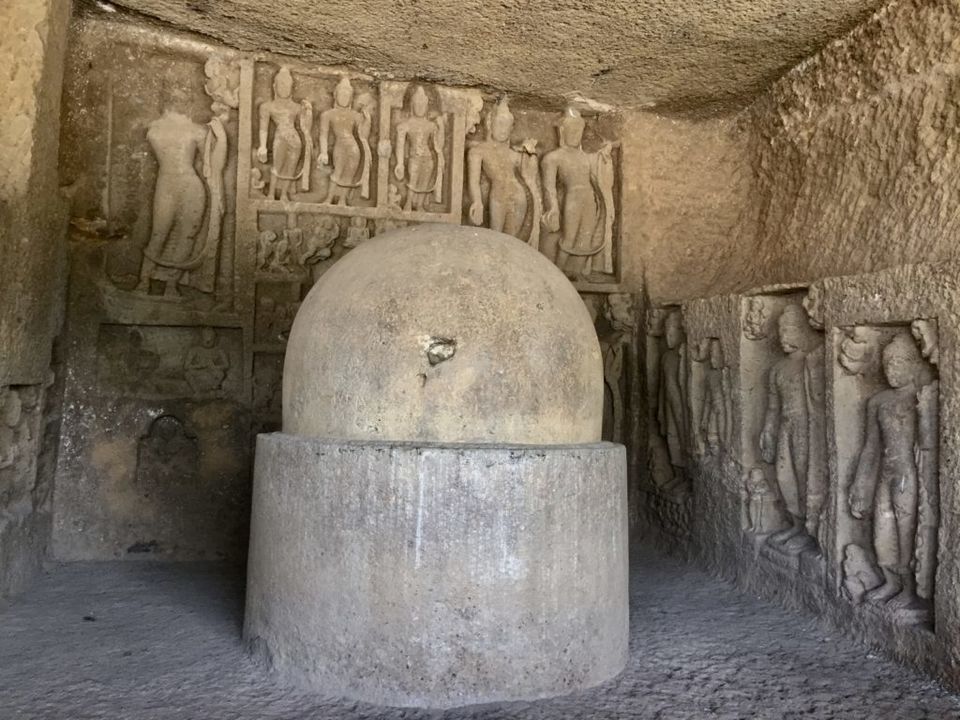
Cave 3
Cave 3 is the chaitya cave and the most celebrated cave of Kahneri.
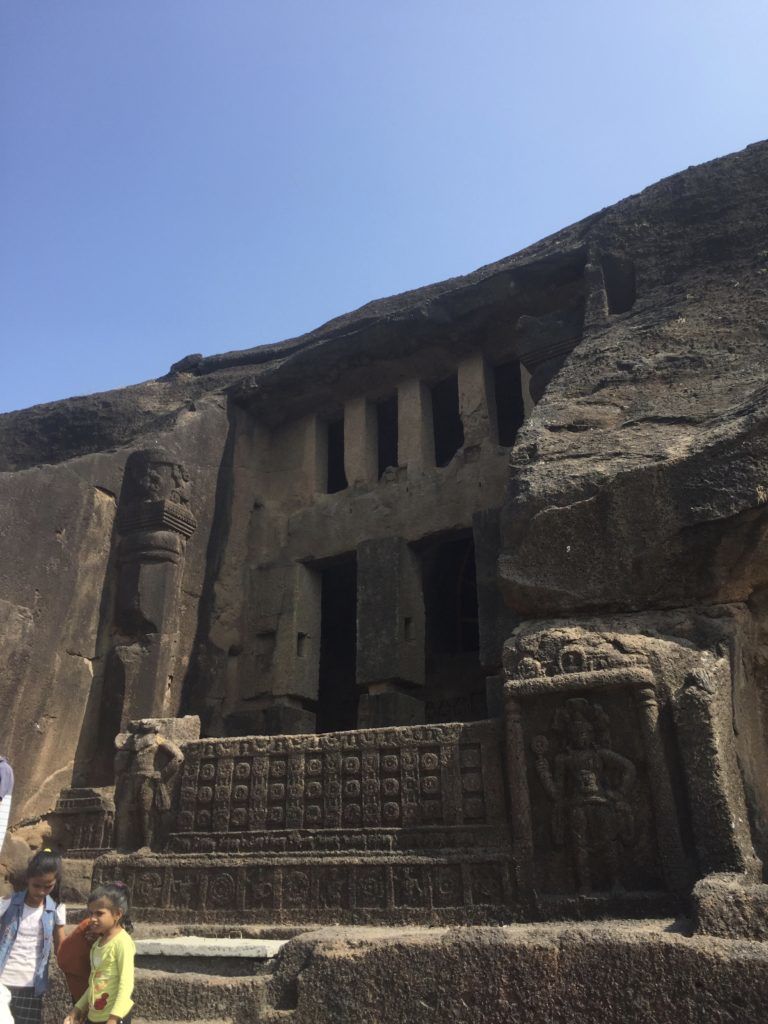
On the entrance on either side, there are huge Buddha statues. These statues are first of its kind in Buddhist Iconogry due to their mammoth size.
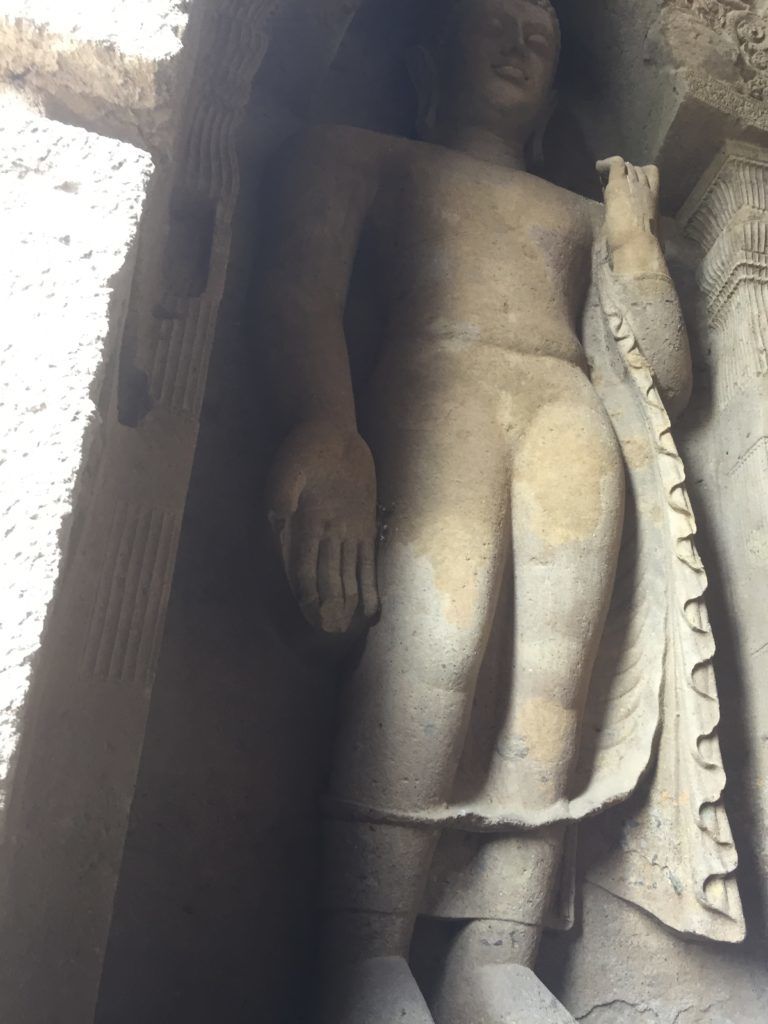
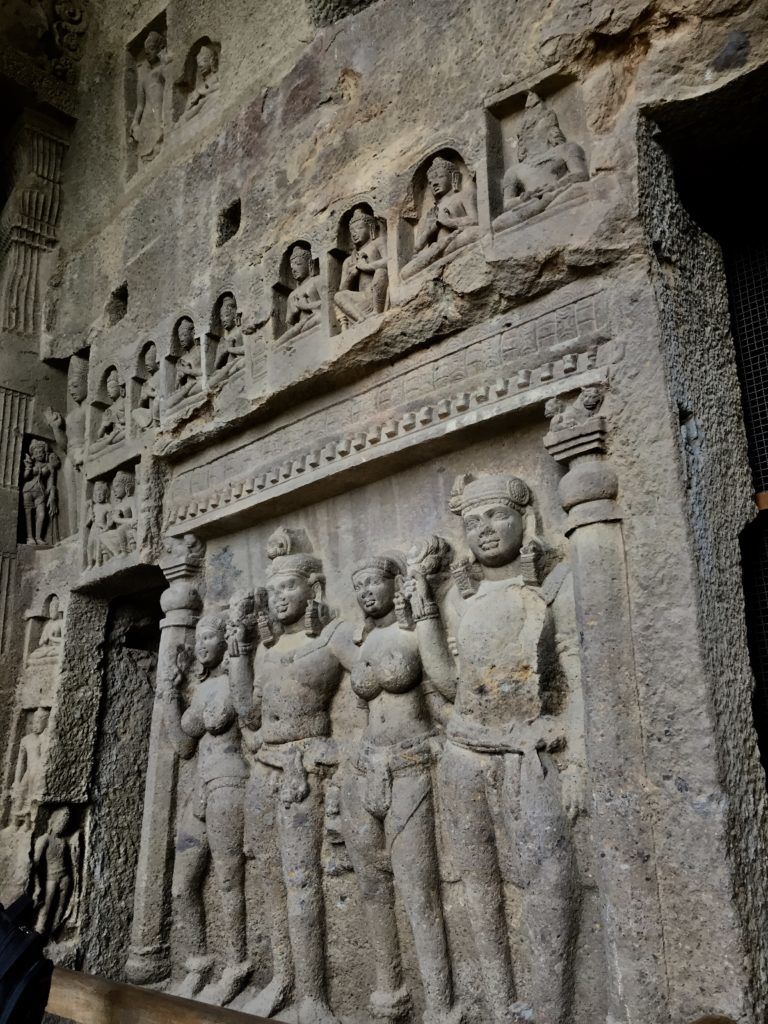
These Buddha statues are claimed to be one of the earliest statues of Buddha in India. It is even believed that with these statues, the trend of building large idols of Buddha started which later spread in Asia.
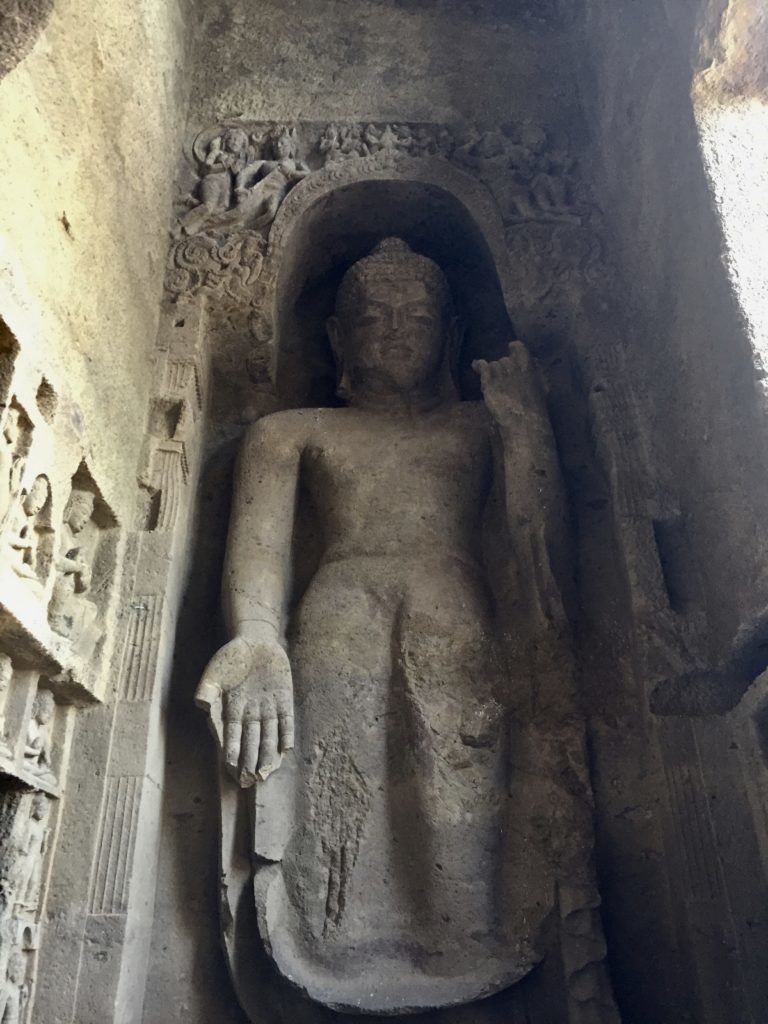
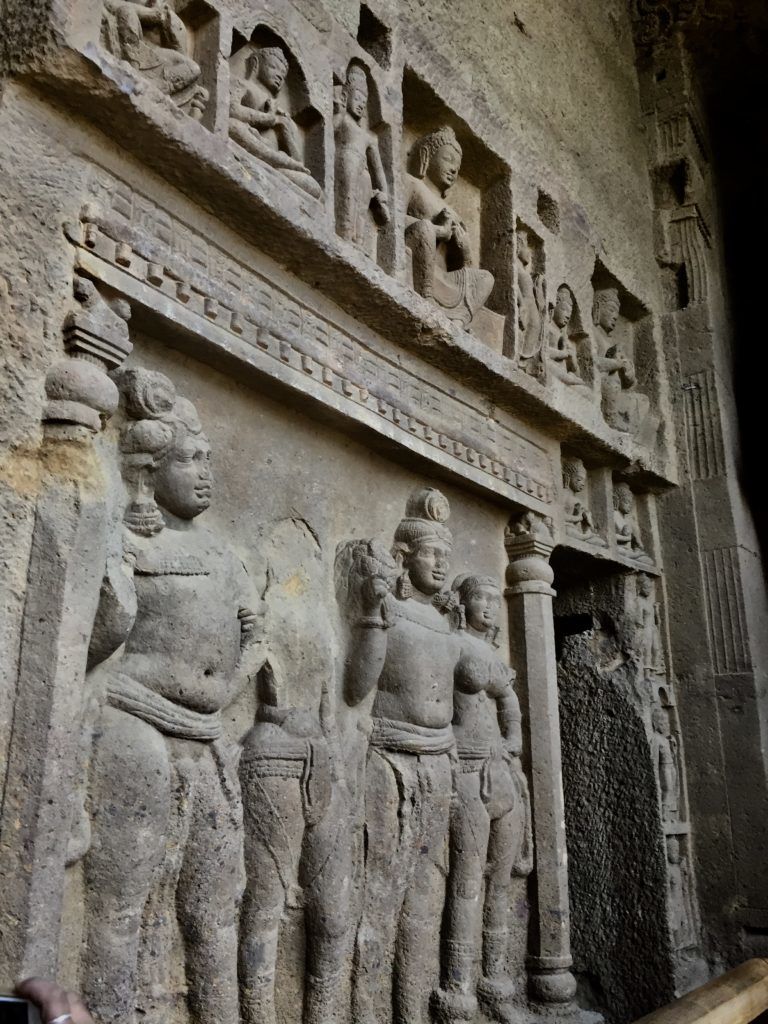
Inside the case is a huge Buddha stupa and it has pillars on either side, few of the pillars are unfinished.
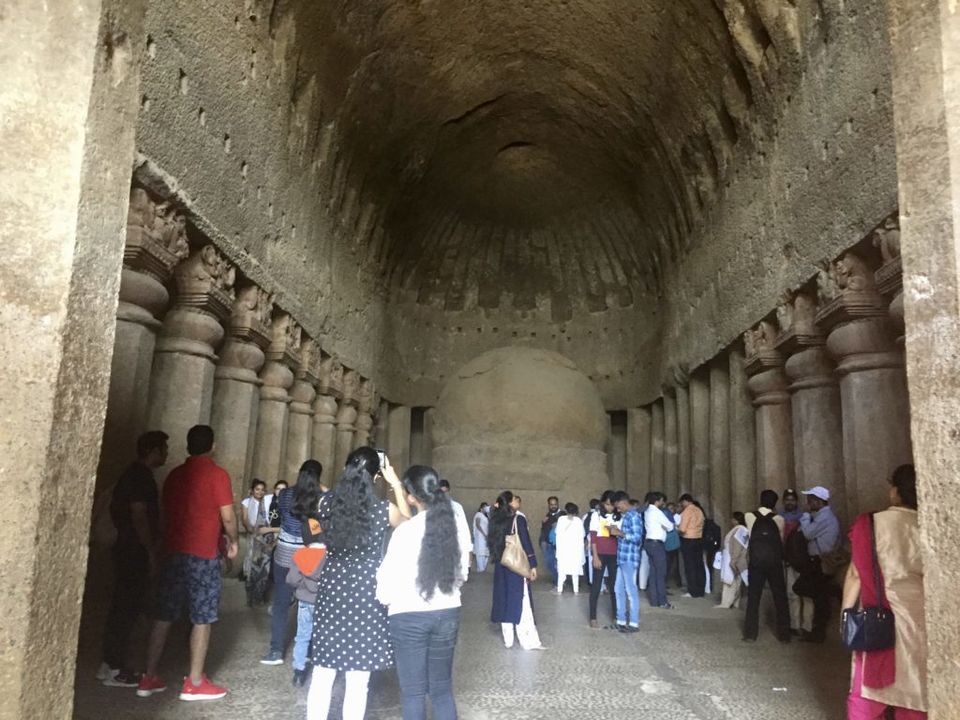
Cave 11
The Durbar Hall or the Assembly Hall has a statue of Buddha enshrined in the center and many small Viharas on either side.
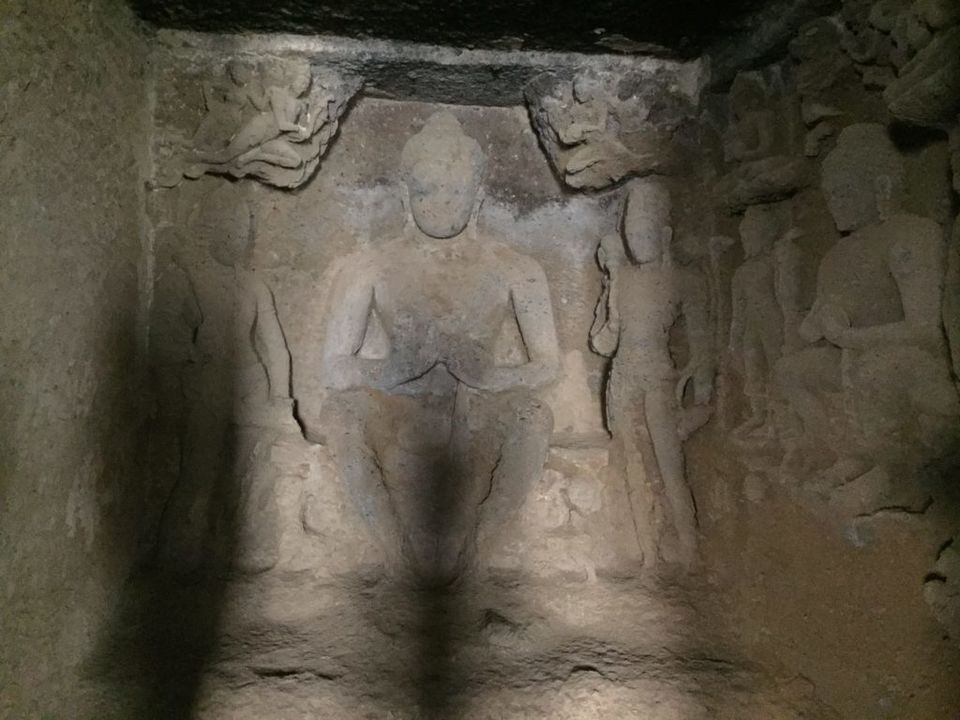
Dining area in Cave 3
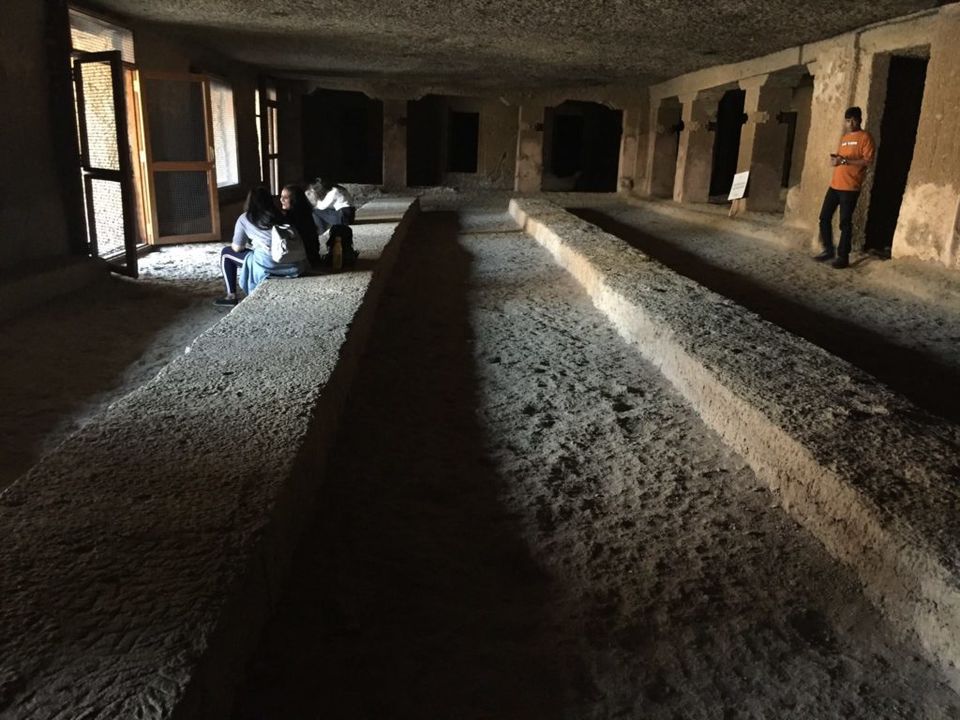
Viharas
Most of the caves are small cells used by Buddhist students for living and meditation.
Each Vihar has a small porch, one main room, and a small room that has a stone bed. Exterior part with have a cistern for water storage on either side
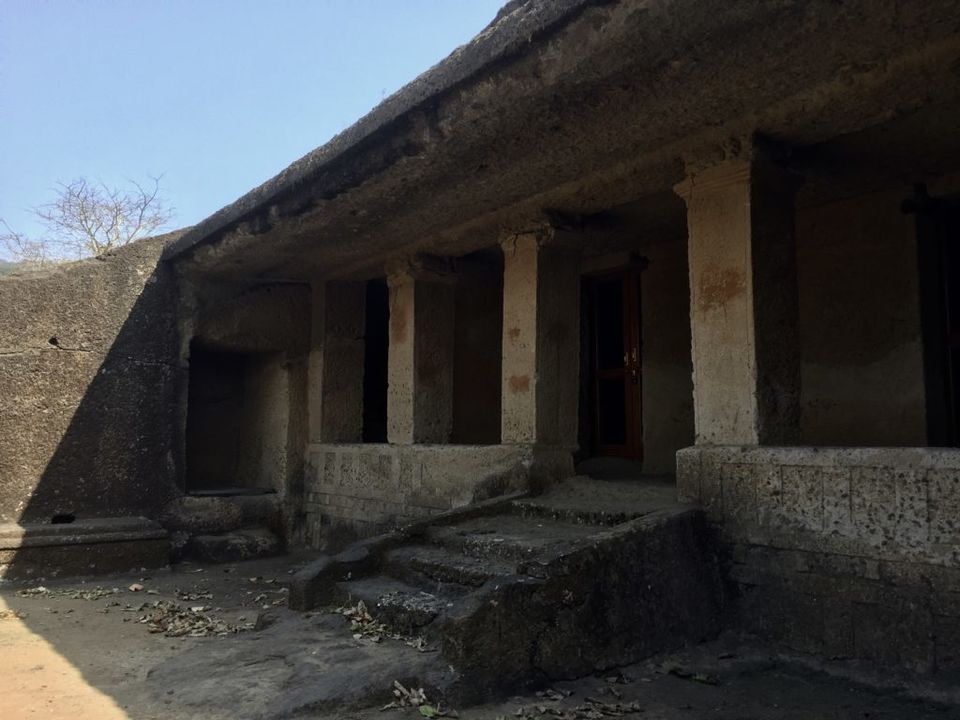
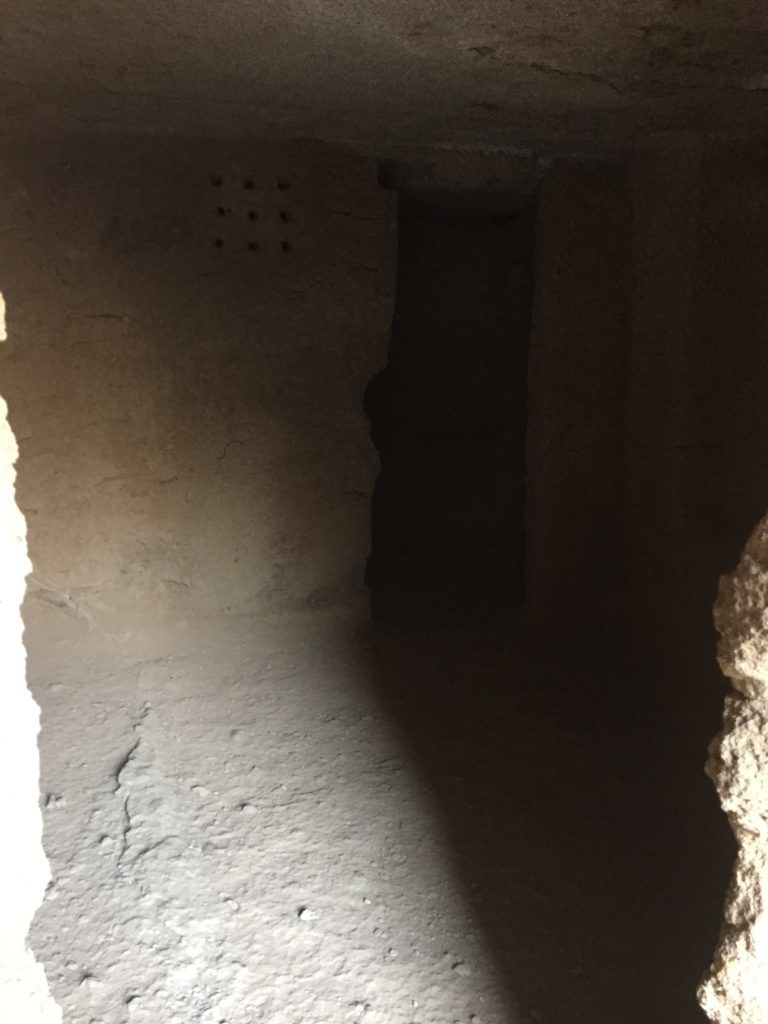
Windows for ventilation carved on all viharas.
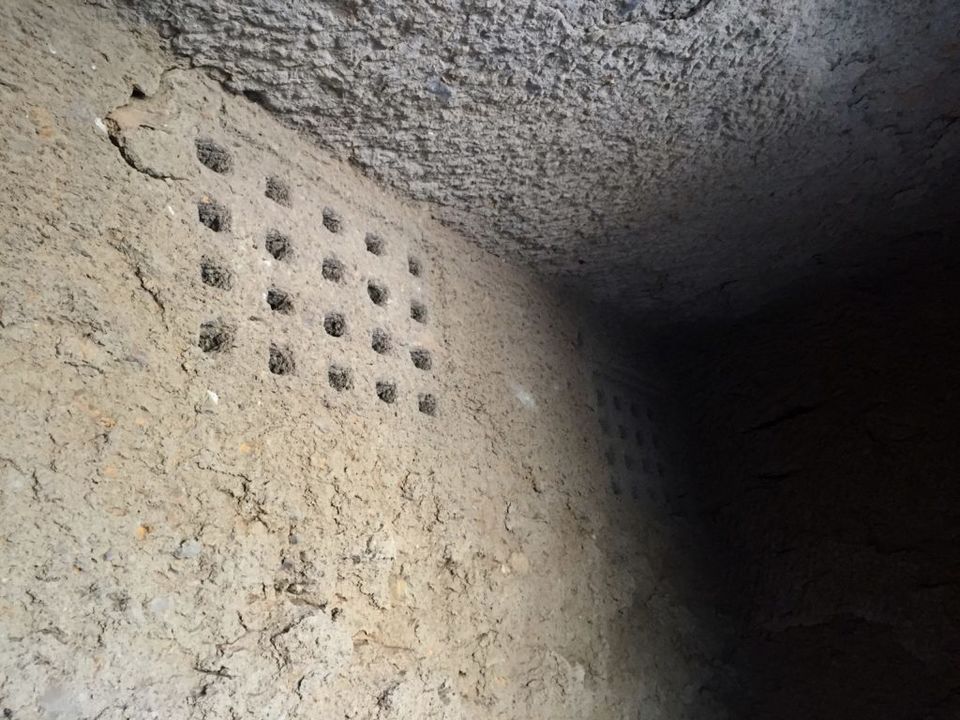
Few viharas even have inscriptions on few caves mentioning names of merchants who sponsored for these caves
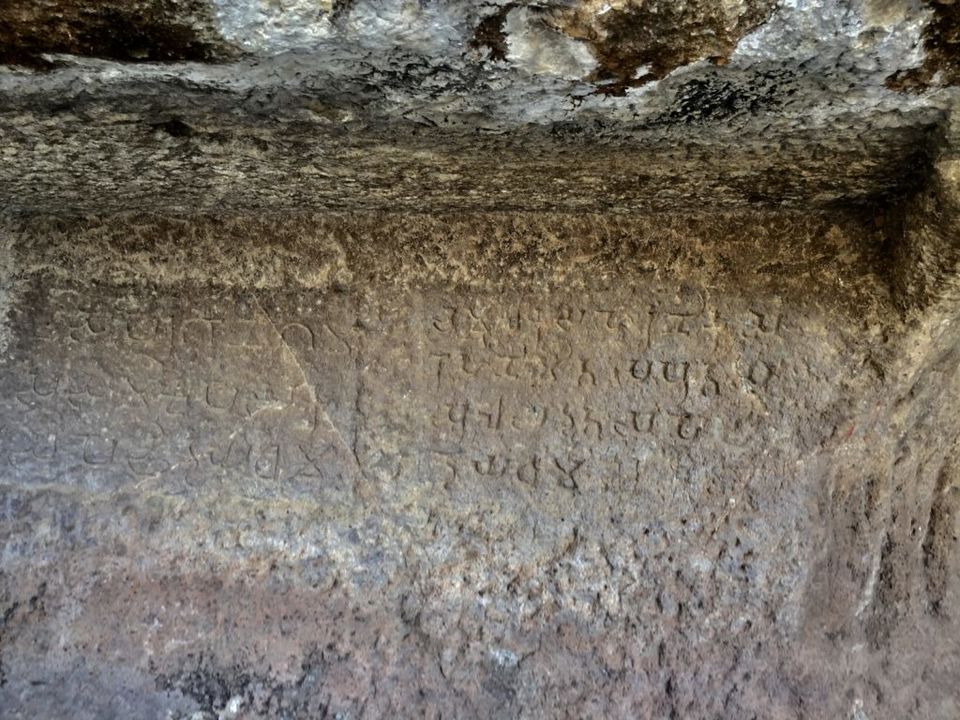
Huge grinding stone outside each vihara, probably used for grinding purposes or for storing water or food.
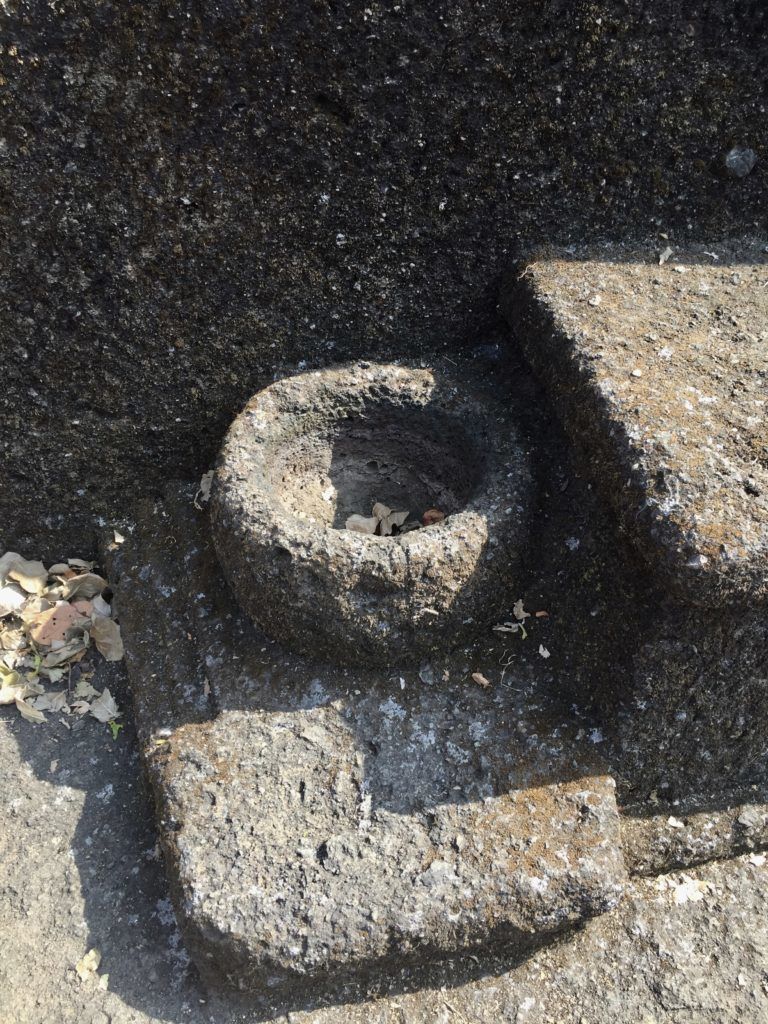
Rock Cut Stairs connecting all the caves.
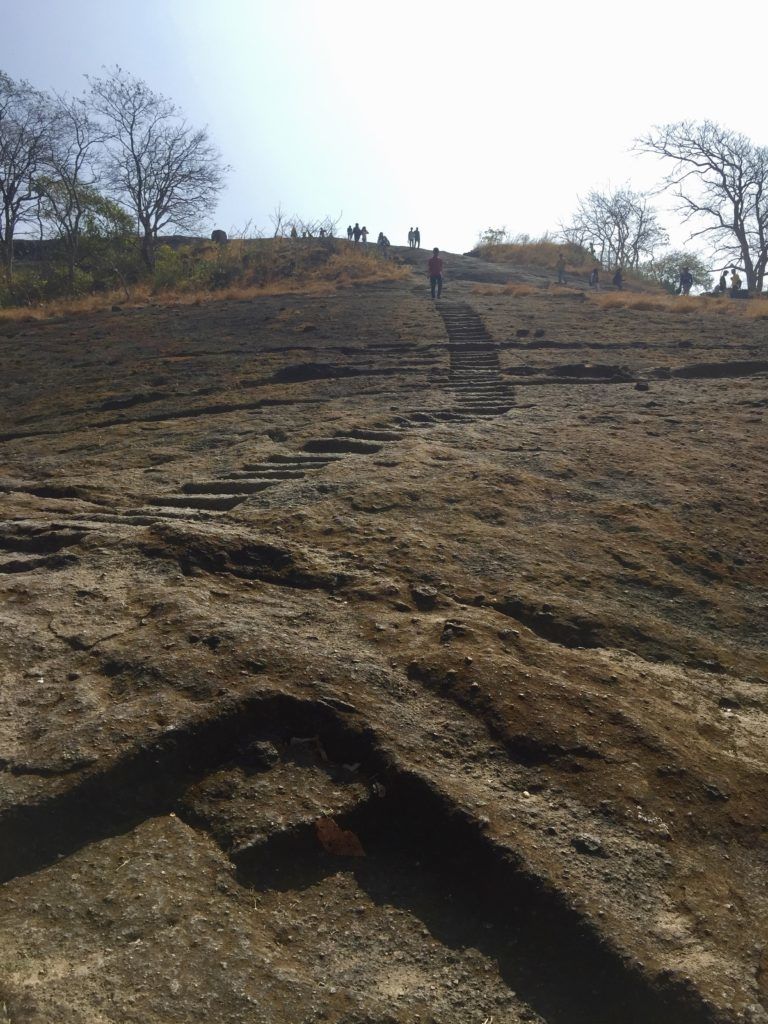
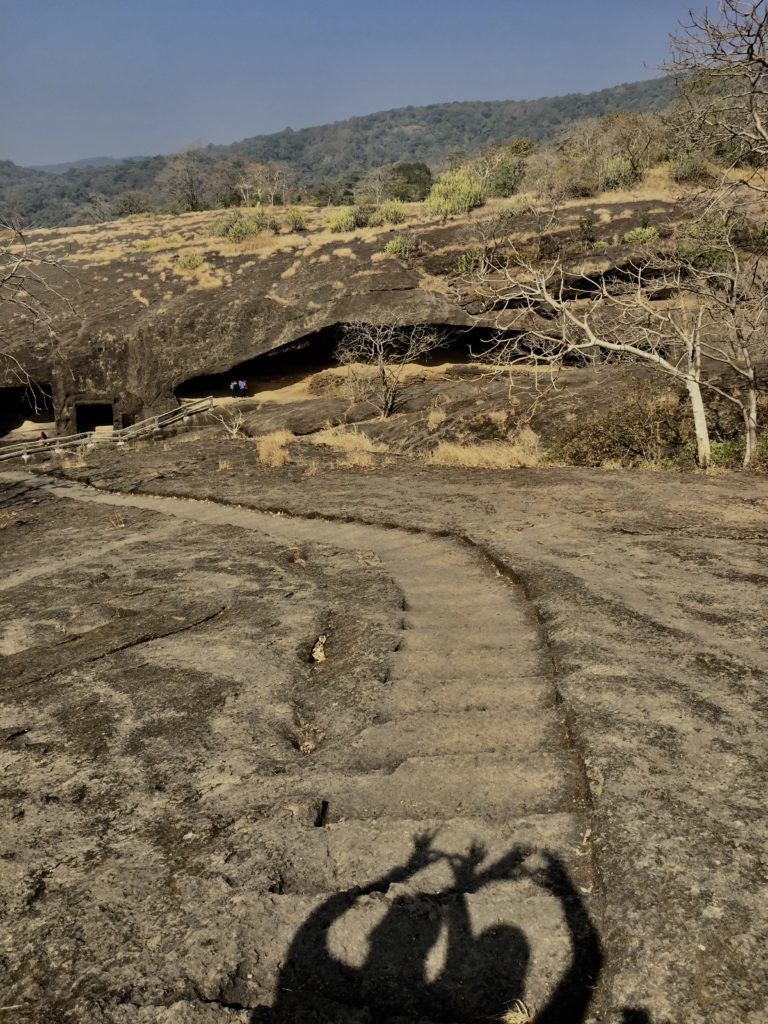
Exterior of Caves
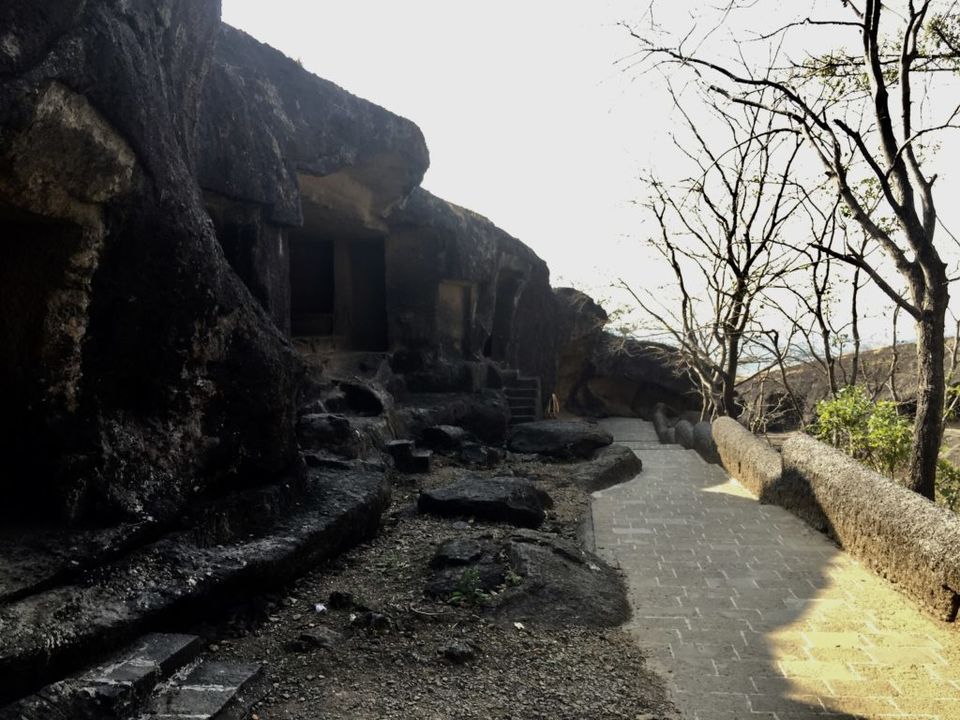
View of caves from the top of the hill
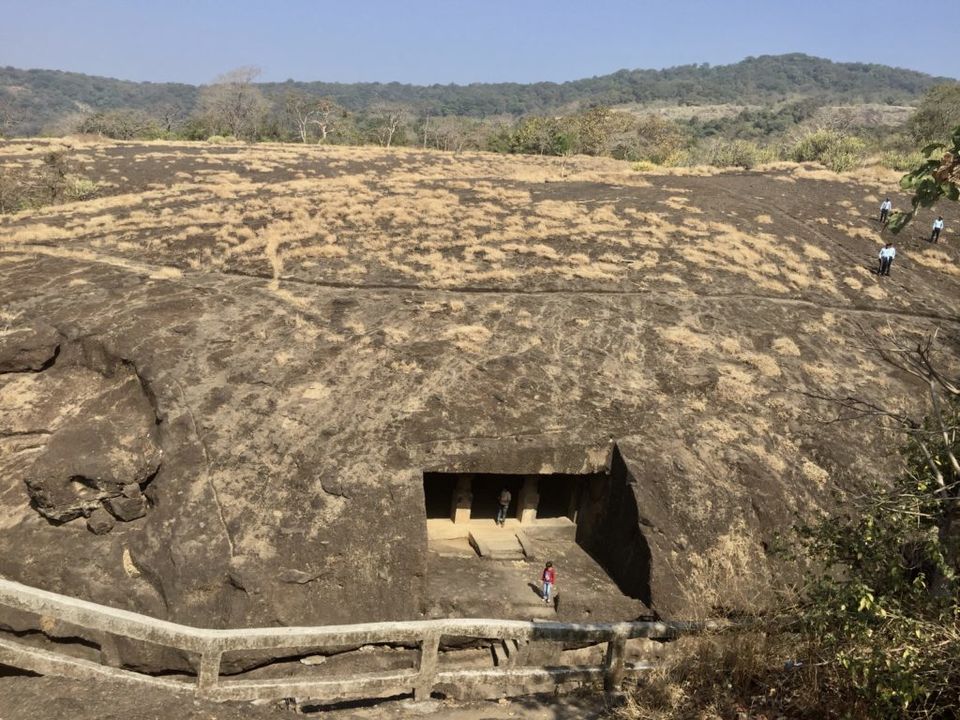
Evolved Rain Water Harvesting System.
Kahneri in Mumbai region is famous for its heavy monsoons which lasts between June to September, Over the years the water management system was evolved by inhabitants to store this rainwater to last them for remaining dry months.
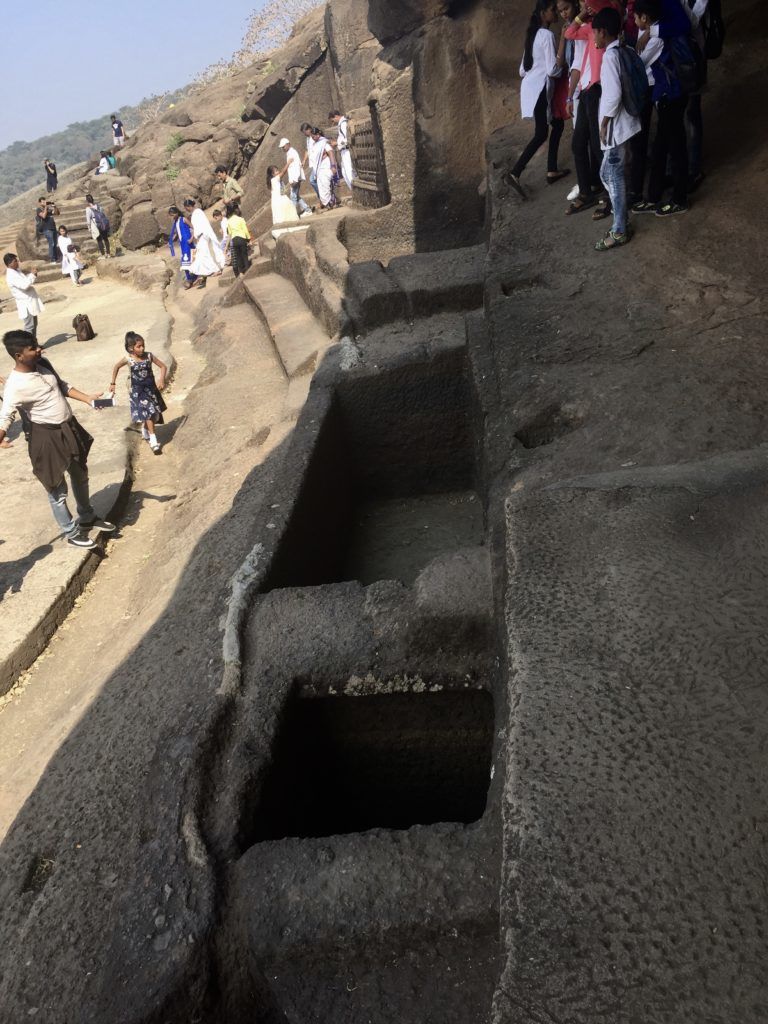
Two hills on which these caves are built look like one water stream flows during Monsoon season and water tanks are built to collect this water.
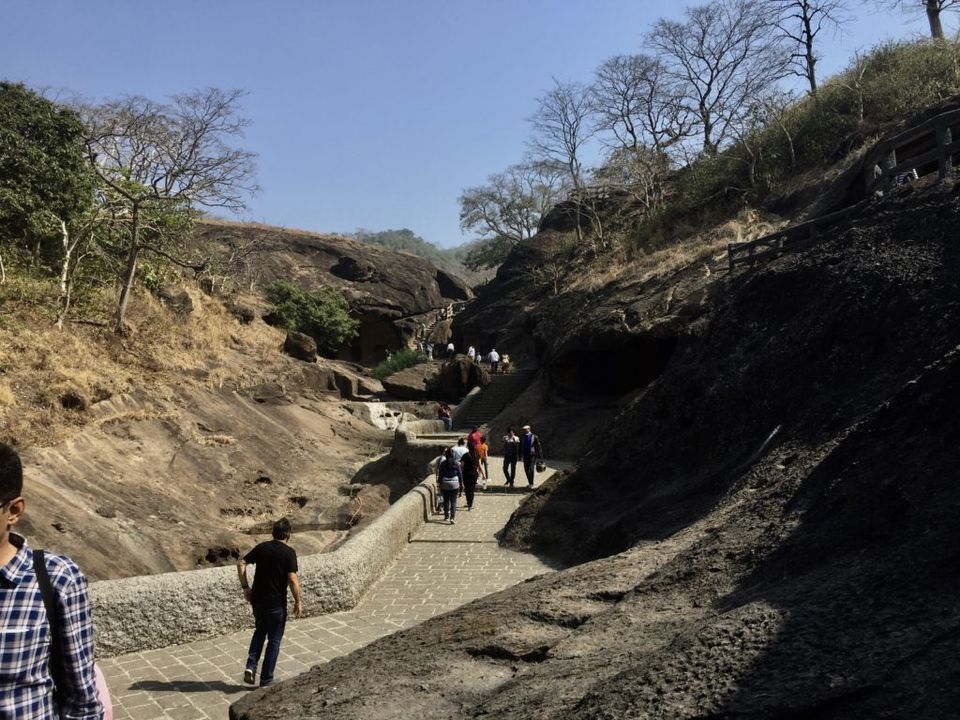
On the top of the hill there are huge water tanks and then small canals which help to route water from top to bottom in a perfect network system.
These cisterns have multiple level structure where top cisterns fill first and when it is full water routs to next cisterns, to ensure water isn't waster at all. Each Cave has cisterns on either side.
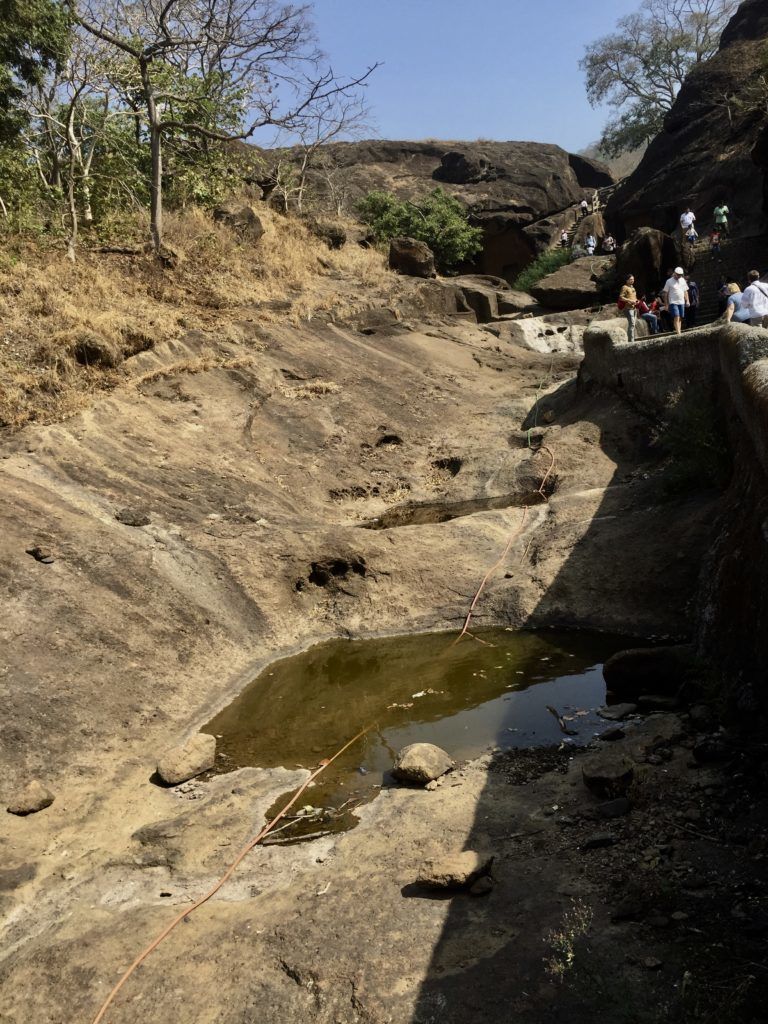
One of the water tanks on top of the hill
Best season to visit Kahneri Caves
Best Season to visit If you want to explore all the caves is from December - Jan. Climate is pleasant, you can walk around and due to sunlight - the interior of caves is bright.
Even Rainy season is the perfect season to explore caves for adventure purpose as the climate is pleasant and the forest around caves is lush green, however, the interior of caves are dark so I suggest carrying torch if you want to explore caves properly.
During rainy season avoid days when it is pouring heavily as it might get big dangerous as water starts accumulating on the pathways making it slippy and bit dangerous especially if you have kids with you.
I would suggest taking private vehicles till the main entrance of caves and then exploring which will take 2-3 hours.
If you are looking for some adventure you can even walk from the main gate of national park ~ 6kms from caves.


